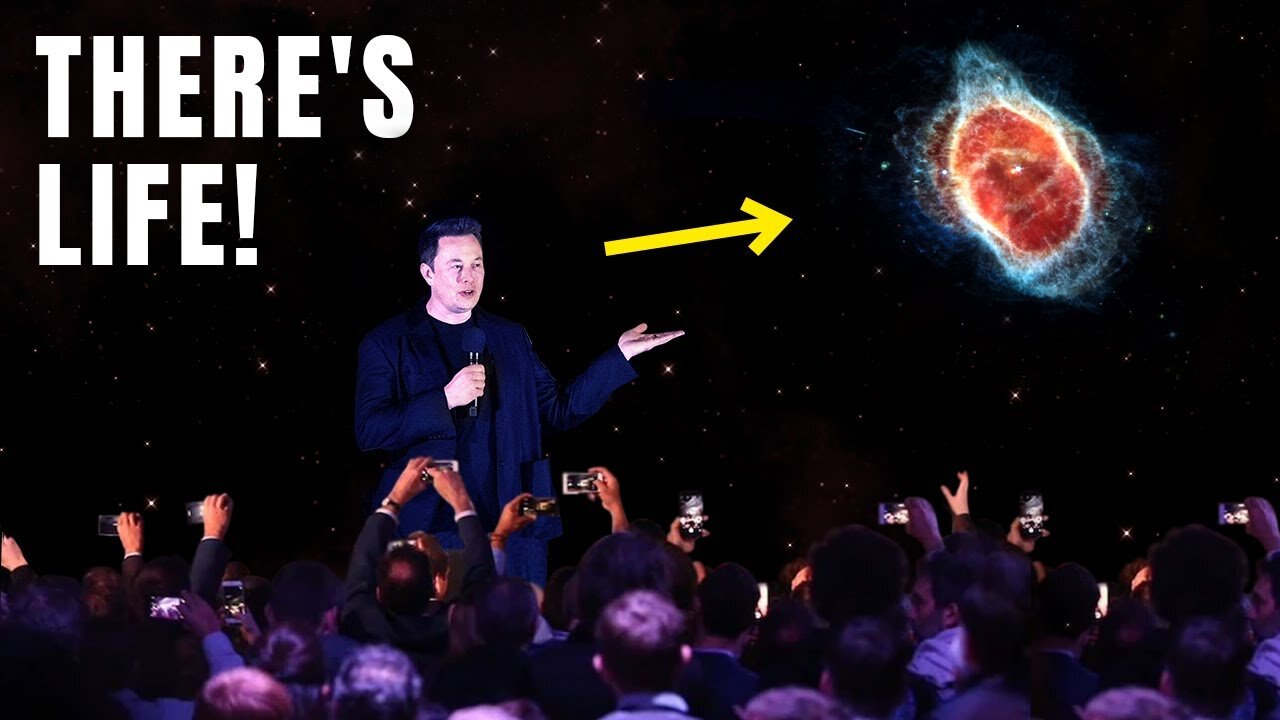Premium Only Content

James Webb Telescope's TERRIFYING New Discovery SHOCKS The Space Industry!
James Webb Telescope's TERRIFYING New Discovery SHOCKS The Space Industry!
What would you change if you were given the chance to go back in time? Would you want to catch a glimpse of the dinosaurs? Or would you go back to see how the pyramids were really built? Or even perhaps warn your previous self of the upcoming pandemic? As far fetched as traveling back in time may be, looking back in time is a relatively common thing among astronomers. The James Webb Telescope has been fetching us fantastic views of the cosmos all the way back from the beginning of time, dating back to as far as 13 billion years ago. But how can we look back into the past? And what exactly have we found?
We don’t have time-traveling cars just as yet, but what astronomers do have is the world's most advance observatory orbiting the Sun at a distance of around one million miles from the Earth. Now, as we’ve come to understand over time that our Universe is bound by the rules of physics, with one of the best-known rules being the speed of light. When we talk about light here, we’re actually referring to all the wavelengths across the electromagnetic spectrum, which travel at an incredible 300,000 kilometers per second.
We’ve kind of taken light for granted, so much so that it appears to be instantaneous and considering that our eyes can’t really tell how fast light goes, it makes sense that we do. Even at these blistering speeds, it still takes some time to travel anywhere across the cosmos. If you already didn’t know, the universe is a really, really big place. When you look at the Moon, you actually see it as it was 1.3 seconds ago. It’s only a tiny peek back in time, but it’s technically still the past. It’s the same with sunlight, except the photons or light particles emitted from the Sun’s surface travel just over eight minutes before they finally reach Earth. Pretty cool right?
Our galaxy, the Milky Way, spans over 100,000 light-years. That’s light travelled over the span of a year. If you were wondering how much that could be, well that’s about 9.46 trillion kilometers, or 5.88 trillion miles. Yup, you heard that right. One light year is 9.46 trillion kilometers, and the Milky Way spans over 100,00 of those.
The JWST’s image, recent released on the 12th of July, of the beautiful newborn stars seen in Carina Nebula are around 7,500 light-years away. To put that into perspective, this nebula as pictured is from a time roughly 2,000 years earlier than when the first ever writing is thought to have been invented in ancient Mesopotamia. Whenever we look away from the Earth, we’re looking back in time to how things once were. Astronomers’ kind of have superpowers that way, because we can use light, as observed throughout time, to try to piece together the mysteries of our universe.
-
 1:00:41
1:00:41
Timcast
3 hours agoTrump MOBILIZING National Guard In NATIONWIDE Crackdown
122K127 -
 1:06:02
1:06:02
Sean Unpaved
2 hours agoQuarterbacks, Coaches, & Contracts: Sanders' Draft Drama, Meyer vs. Harbaugh, & McLaurin's Big Deal
14.9K -
 2:11:45
2:11:45
Steven Crowder
5 hours agoDonald Trump Vs American Crime: Chicago is Next & Libs Are Freaking Out
299K245 -
 41:08
41:08
Grant Stinchfield
1 hour agoDemocrats Try to Turn California Into Predator Playground with Proposed "Child Predator Dream Bill"
16.7K2 -
 1:21:06
1:21:06
Rebel News
2 hours agoCdn troops in Ukraine? Poilievre backs self-defence, Hamas thugs cancel Ottawa Pride | Rebel Roundup
18.3K17 -
 24:58
24:58
Neil McCoy-Ward
2 hours ago⚠️ OUTRAGE! What They Just Announced For YOUR HOME!!! 🚨
18.4K10 -
 LIVE
LIVE
IrishBreakdown
4 hours agoNotre Dame and Miami Set To Reignite Intense Rivalry
333 watching -
 1:57:07
1:57:07
The Charlie Kirk Show
2 hours agoChicago Next! + The Blue Slip Problem | Sen. Tuberville, Alex Clark | 8.25.2025
54.3K14 -
 1:20:52
1:20:52
Benny Johnson
4 hours ago🚨Trump LIVE Now: Signs Executive Order ENDING Cashless Bail | Dem Cities PANIC, Which City NEXT?...
68.1K51 -
 1:31:26
1:31:26
The White House
5 hours agoPresident Trump Signs Executive Orders, Aug. 25, 2025
46.3K21